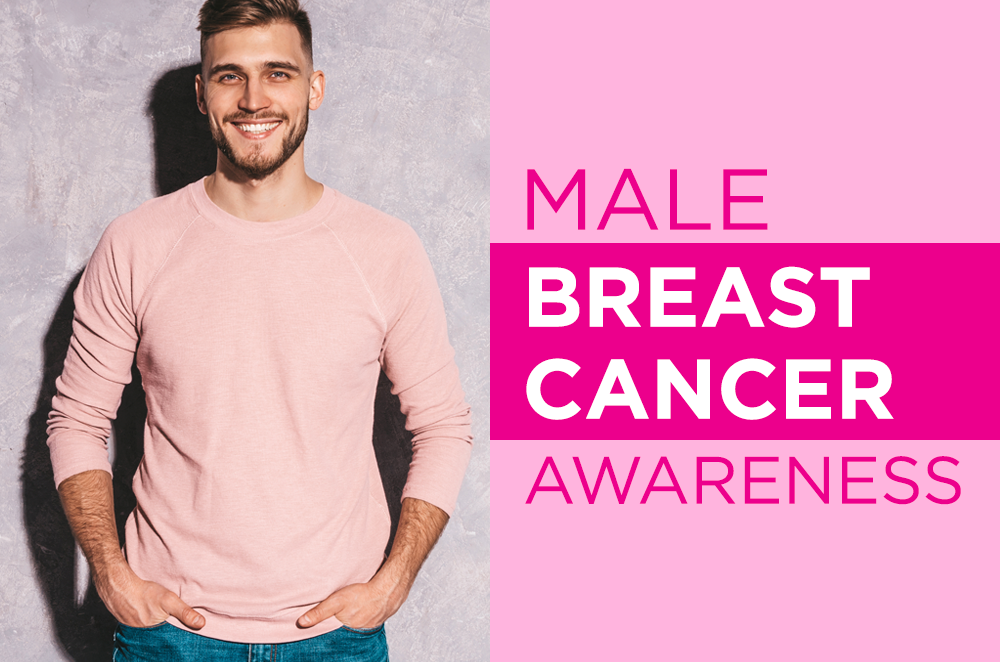What do you think of when you hear the words ‘breast cancer’? For most people, the answer is women. But did you know that male breast cancer affects thousands of men every year? Next week is Men’s Breast Cancer Awareness Week, a crucial time to shine a light on a topic that’s often overlooked.
At Comanche County Memorial Hospital, we believe in empowering our community with knowledge, and that includes understanding that breast cancer isn’t exclusively a women’s disease. While it occurs more rarely in men, it still affects them, and early detection is just as critical for them.
Let’s break down what every man needs to know about breast cancer.
Male Breast Cancer Statistics
Male breast cancer is rare, but it does happen. While it’s much less common than in women, it’s a serious disease that affects thousands of men each year. Here are some key facts:
- A man’s lifetime risk of getting a breast cancer diagnosis is about 1 in 833.
- Doctors diagnose more than 2,700 new cases of invasive male breast cancer in the U.S. each year.
- Unfortunately, about 530 men die from the disease annually. This higher mortality rate compared to women often stems from a delayed diagnosis because a lack of awareness and reluctance to seek care cause men to put off seeing a doctor.
Risk Factors for Male Breast Cancer
While the exact causes of breast cancer are complex, several factors can increase a man’s risk. Therefore, it’s important to know if you’re in a higher-risk category.
Age: The risk of male breast cancer increases with age, with doctors diagnosing most cases in men between 60 and 70.
Family History & Genetics: A strong family history of breast cancer (in either men or women) significantly increases your risk. Additionally, genetic mutations, particularly in the BRCA1 and BRCA2 genes, link to a higher risk of breast cancer in both sexes.
Klinefelter Syndrome: This genetic condition, where males are both with an extra X chromosome (XXY), leads to higher estrogen levels and larger breasts. As a result, it increases breast cancer risk.
Obesity: Being overweight or obese can increase estrogen levels in men, which is a known risk factor.
Liver Disease: Conditions like cirrhosis can alter a man’s hormone balance, increasing estrogen and lowering androgen levels.
Estrogen Treatment: Men who have taken estrogen for conditions like prostate cancer treatment have an increased risk.
Radiation Exposure: Previous radiation therapy to the chest, such as for lymphoma, can increase a man’s risk.
Alcohol Consumption: Heavy alcohol use is also associated with an increased risk of male breast cancer.
Symptoms of Male Breast Cancer
One of the biggest challenges with male breast cancer is that men often dismiss or attribute the symptoms to other, less serious conditions. Knowing what to look for, however, can save your life.
Common symptoms in men include:
A Lump or Swelling: This is the most common symptom, which you can often feel behind the nipple and areola. It may be painless, but can also be tender.
Skin Dimpling or Puckering: Watch for any changes to the skin of the breast, such as dimpling, puckering, or redness.
Nipple Retraction: Pay attention to a nipple that turns inward.
Scaling or Redness of the Nipple or Areola: Look for changes to the nipple or the dark area around it.
Swelling in the Armpit: This could indicate swollen lymph nodes.
If you notice any of these changes, please don’t delay. Contact your doctor immediately. Even if you think it’s nothing, it’s always best to have it checked out.
Diagnosis and Treatment
Doctors use similar procedures to diagnose male breast cancer as they do for women:
- Clinical Breast Exam: Your doctor will physically examine your chest and armpit area.
- Mammogram: We use specialized X-rays to see the breast tissue.
- Ultrasound: This procedure uses sound waves to create images of the breast.
- Biopsy: Doctors take a small tissue sample for laboratory analysis to confirm cancer.
Treatment options depend on the stage and type of cancer but often include surgery (mastectomy), radiation therapy, chemotherapy, hormone therapy, and targeted therapy.
Awareness and Early Detection
The most powerful tool we have against male breast cancer is awareness. It all starts with you. Get to know your body and check your chest regularly for any unusual lumps, rashes, or other changes. If you notice something, don’t ignore it—make an appointment to talk to your doctor.
It’s important to remember that a breast cancer diagnosis doesn’t define your masculinity. Seeking help is a sign of strength. Overcoming any feelings of shame or embarrassment is the first step toward getting the care you need. You can also help by sharing this information with the men in your life. By spreading awareness, you can help ensure more men are informed, proactive, and able to catch this disease early.
At Comanche County Memorial Hospital, our dedicated team provides comprehensive care, from screening and diagnosis to treatment and support. We encourage all men to take a proactive approach to their health and remember: men get breast cancer, too.
Resources:
https://www.nationalbreastcancer.org/male-breast-cancer/
https://www.breastcancer.org/about-breast-cancer/breast-cancer-awareness-month
Disclaimer:
The Comanche County Memorial Hospital website does not provide specific medical advice for individual cases. Comanche County Memorial Hospital does not endorse any medical or professional services obtained through information provided on this site, articles on the site or any links on this site.
Use of the information obtained by the Comanche County Memorial Hospital website does not replace medical advice given by a qualified medical provider to meet the medical needs of our readers or others.
While content is frequently updated, medical information changes quickly. Information may be out of date, and/or contain inaccuracies or typographical errors. For questions or concerns, please contact us at contact@ccmhhealth.com.

